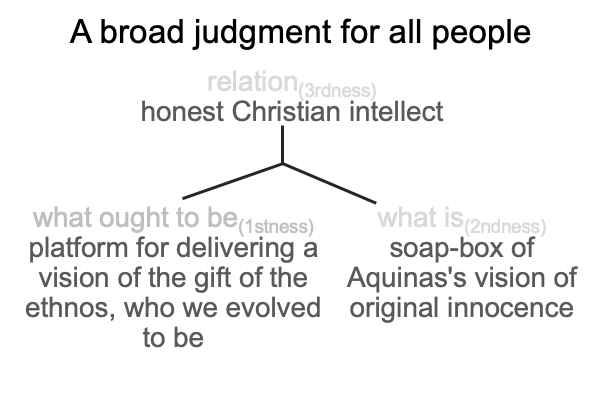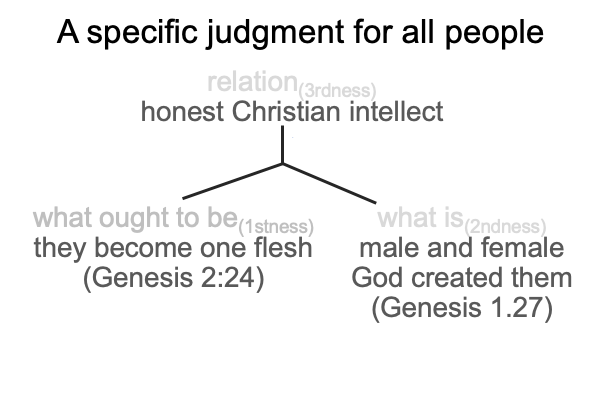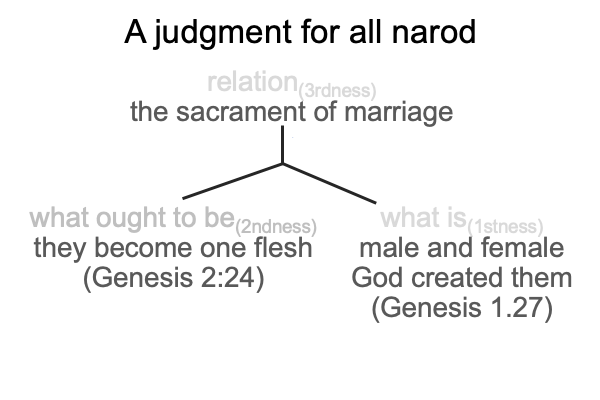0013 Now, the original judgment must be corrected, not only for the spelling error, but with the spelling error in mind.

0014 Theoretically, John Paul II addresses concerns about Humanae Vita, an encyclical written and approved in the treacherous year of 1968. The scope is narrow. This proclamation expresses a theology of the body. And, it is not about scented body-wash, which is now on sale at commercial venues, as an X-mas gift for whoever is significant to the one making the purchase.
0015 As already intimated, John Paul II uses the theology of Aquinas as a platform on which to stand and proclaim a truth concerning who we evolved to be. We evolved to live as images of God.
To date, no philosopher in the tradition of Aquinas follows the pope’s daring lead.
John Paul II cannot be put into the box of Aquinas’s theology. Instead, Aquinas’s theology is the box that John Paul II stands on to proclaim a theology to the modern world, that contests all the mercantilist, and fraternalist, and normativist theories proposing materialist solutions to our immaterial condition. We are created in the image of God.
0016 So, of course, current scientific theories of human evolution must be reconfigured with the pope’s daring stand in mind.
And oddly enough, this is precisely what Razie Mah does in his three e-masterworks, The Human Niche, An Archaeology of the Fall and How To Define The Word “Religion”.
Now, should I say that these would make wonderful Christmas gifts?
0017 Okay, Pope John Paul II offers a broad challenge to the tradition of Aquinas while concentrating on a narrow issue: the theology of the body.
How do elements of the biblical teaching of Genesis key into the above (broad) judgment?
Here is a picture.

0018 Does the judgment that John Paul II develops in Theology of the Body point to Alexander Dugin’s conceptualization of the ethnos?
Here is how to read the above diagram.
An honest and holistic intelligence (relation, thirdness) brings the creation of male and female in an evolution-sounding revelation (what is, secondness) into relation with the moral of Adam’s reaction to Eve upon presentation of a “helper” (what ought to be, firstness).
This judgment belongs to the divine suprasubjectivity of original justice, and is manifested as a commitment in human subjectivity. Marriage is not a thing, or only a ritual. Marriage is a transubstantiation of this judgment.
0019 Of course, I use the term, “transubstantiation”, in an unfamiliar, yet technically precise, manner. Transubstantiationis a “change in substance”, corresponding to a change in assignment of Peirce’s categories. For example, ‘something1‘ in firstness becomes an actuality2 in secondness.
For this particular judgment, what is and what ought to be change categories when the relation becomes the sacrament of marriage (a relation consistent with the honest Christian intellect of Pope John Paul II).
0020 Here is a picture.

0021 Once again, the sacrament of marriage (relation, thirdness) brings the creation of male and female in an evolution-sounding revelation (what is, firstness) into relation with the moral of Adam’s reaction to Eve upon presentation of a “helper” (what ought to be, secondness).
